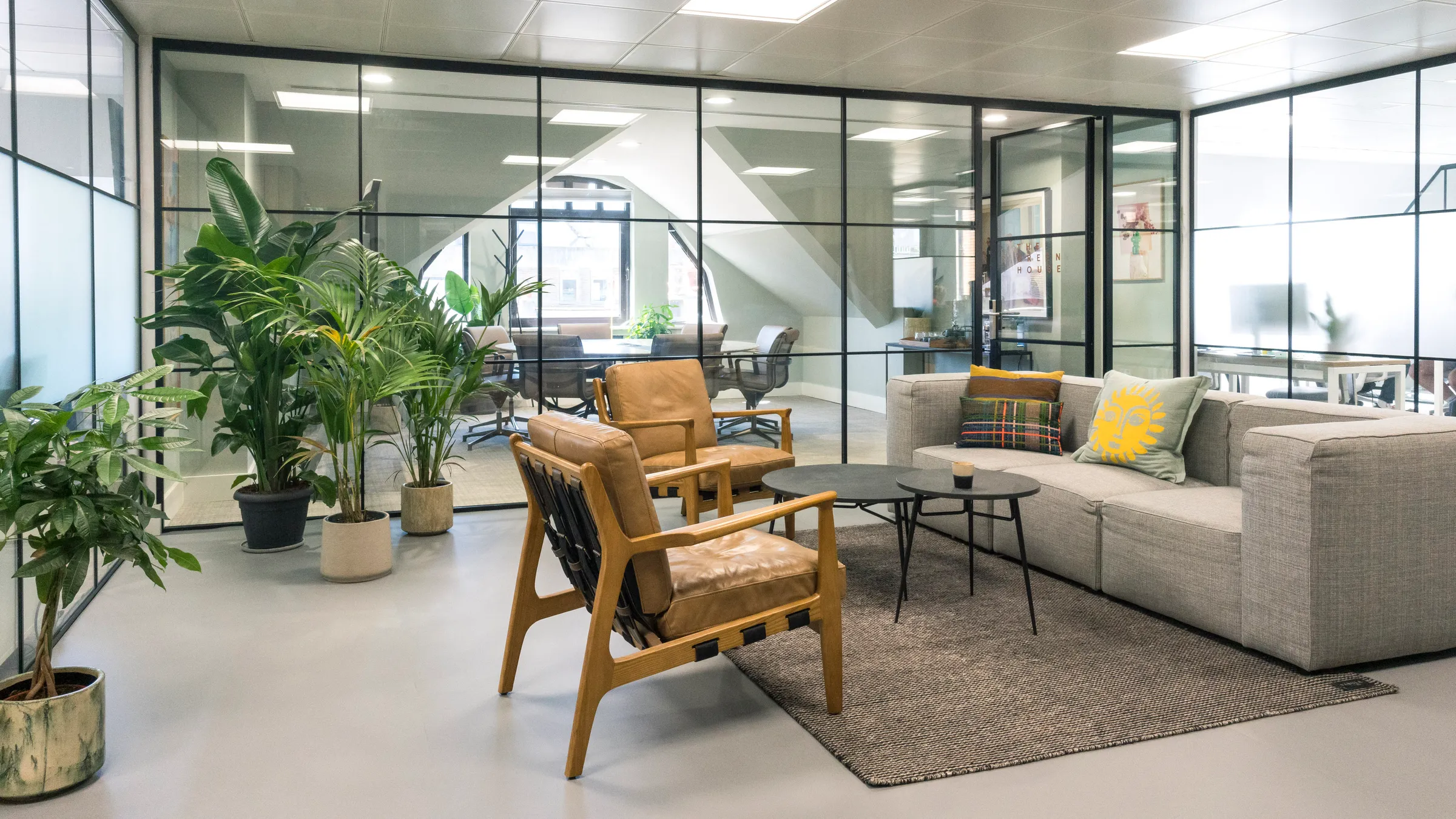The Furniture Consultant's Guide to Sustainable Choices
How do we balance functionality with sustainability? What are the long-term benefits of going green? We cover key certifications and actionable tips for consultants to help in making informed, sustainable choices.


Written by
Fritha Selwyn-Jones
Contents
The workforce of today is invested in the greater good, putting inclusivity, wellbeing, and responsible practices at the top of the list of expectations of their employers. Workers across all generations seek employers whose values align with their own, and particularly in recent years and later generations like Gen Z, altruistic values regarding the preservation of the planet and our futures are an unshakeable priority.
Employees see sustainability initiatives as a deal-maker when it comes to job satisfaction and motivation and they’ve even been reported to improve performance and develop traits of optimism and creativity. As furniture consultants, we have the power to create a workplace that leads with sustainability, reinforcing brand values in the minds of employees, stakeholders, clients, and customers. The key for us is balancing functionality with sustainability to create an environment that benefits both the business and the environment. When it’s done well, a sustainable workplace has long-term benefits for all those affected by the space.
Understanding Eco-friendly Materials
What Makes a Material Eco-Friendly?
Eco-friendly materials have a minimal impact on the environment throughout their lifecycle. They are typically renewable, non-toxic, and biodegradable, making them a more sustainable choice compared to conventional options. Understanding these characteristics can help us recommend furniture that aligns with your sustainability goals.
Common Sustainable Furniture Materials
Wood: When choosing wooden furniture we seek pieces made from certified wood, such as FSC (Forest Stewardship Council) certified wood or reclaimed wood. FSC certification guarantees that the wood is sourced from responsibly managed forests that provide environmental, social, and economic benefits. Putting consideration into the wood we choose for furniture has further benefits than those in sustainability as these materials and production methods often generate items that are better quality and last longer, saving costs down the line.
Bamboo: Known for its rapid growth and renewability, bamboo is an excellent alternative to traditional wood. It is durable, versatile, and has a unique visual appeal that complements a lot of design styles. Bamboo holds the Guinness record for the fastest-growing plant, so it’s a great source of renewable material for sustainable furniture.
Recycled Metal: Furniture made from recycled metals, such as aluminium, helps reduce waste and energy consumption during production. For instance, metal frames crafted from recycled aluminium are not only strong and stylish but also significantly lower the carbon footprint of the furniture piece. Aluminium is a virtually magical material which does not deteriorate through multiple reuse cycles. 75% of all aluminium ever produced is still in use today.
Reclaimed Fabrics: Designers seeking ways to contribute to sustainability goals are increasingly using textiles made from recycled materials, like PET bottles or discarded ocean plastic, in upholstery. Innovation in recycled and reclaimed fabrics allows businesses to meet sustainability objectives with materials that look and feel high quality.
When recommending eco-friendly furniture materials, we look for certain characteristics. Key markers and signals will show us where materials came from, what happened during the manufacturing process, and what their impact on the consumer’s carbon footprint will be. Third-party certificates ensure manufacturers are held accountable so we can be certain we’re using materials that truly are sustainable and ethical.
Category | Description | Key Markers & Certifications (UK & EU) |
Renewable Resources | Materials that can be replenished naturally over time. |
|
Minimal Environmental Impact in Production | Low-waste and energy-efficient manufacturing processes. |
|
Recyclable or Biodegradable | Materials that can be broken down or reused at the end of their lifecycle. |
|
Durability | Long-lasting materials that reduce the need for frequent replacements, contributing to a lower overall environmental impact. |
|

Balancing Functionality with Sustainability
The question will always be in a client’s mind: if I choose sustainable, does that mean I will compromise on quality and aesthetics? Sustainable furniture has come a long way in recent years, and it doesn’t mean you’ll be sacrificing functionality and style. Modern innovations have led to the development of intuitive designs like modular furniture and multi-use pieces that tick the boxes for flexibility and space-saving. Such designs can be reconfigured to suit multiple different spaces and facilitate redecorating to support many different creative solutions, reducing the need for more, or replacement, furniture.
Beyond material selection, sustainable furniture choice needs to look at not just the ‘what’ but also the ‘how’. How are these pieces made? Where did they come from? Sustainable manufacturing involves processes that minimise waste and reduce energy consumption. Sometimes, the manufacturing process can be the element that separates a sustainable product from an unsustainable product, even if the product is the same. A chair made in a factory using solar power is significantly more sustainable than one using coal.
Design Principles for Sustainable Furniture
When evaluating sustainable furniture, we should consider these design principles:
Durability and long lifespan: Furniture that withstands the test of time reduces the frequency of replacements, lessening the overall environmental impact. The durability certifications in the table above can help you determine the best products to install.
Versatility and adaptability: Pieces that can be adapted for various uses or spaces offer long-term value and reduce the need for multiple items or replacements too early.
Minimalist design: A simple design not only uses fewer materials but also contributes to a timeless look that remains relevant over the years.
Repairability and upgradability: Furniture that can be easily repaired or upgraded extends its lifespan and reduces waste.

The Long-Term Benefits of Going Green
Sustainable furniture is usually built well, using materials that are carefully developed crafted, and manufactured. Sustainable designers are innovatively skilled, always seeking ways to progress the capabilities of their craft. This particular value positioning means when businesses choose sustainable furniture, it’s going to last. It might be a slightly higher initial investment, but it’ll work out as a cost-saving in the future. This works out well for the end user and the planet, where environmental impact is minimised because we’re responsible for less production over time.
The durability and longevity of sustainable furniture lead to cost savings over time, but that’s not all. Using sustainable materials in construction and renovation projects can open businesses up to tax credits and incentives, making sustainable choices even more economically viable. Here’s a list of such incentives:
Enhanced Capital Allowances (ECAs): Allows businesses to claim 100% first-year capital allowances on investments in energy-efficient and water-saving equipment, reducing initial costs.
Climate Change Levy (CCL) Reduction: Offers tax reductions for businesses that meet energy efficiency or emission reduction targets through Climate Change Agreements.
Green Loans and Grants: Include funding options such as HSBC UK Green SME Fund and Industrial Energy Efficiency Accelerator (IEEA) for businesses investing in eco-friendly projects.
Industrial Energy Transformation Fund (IETF): Grants for businesses in England, Northern Ireland, and Wales to support energy efficiency and decarbonisation projects.
As environmental awareness grows, more consumers are seeking products that align with their values. By offering sustainable furniture options, you not only meet this demand but also position yourself as a forward-thinking consultant who prioritises the planet’s health. This is what helps build trust and strengthen client relationships. If you want to learn more about making sustainable choices in your furniture projects, get in touch today.
Published on
September 20, 2024
Related Articles










